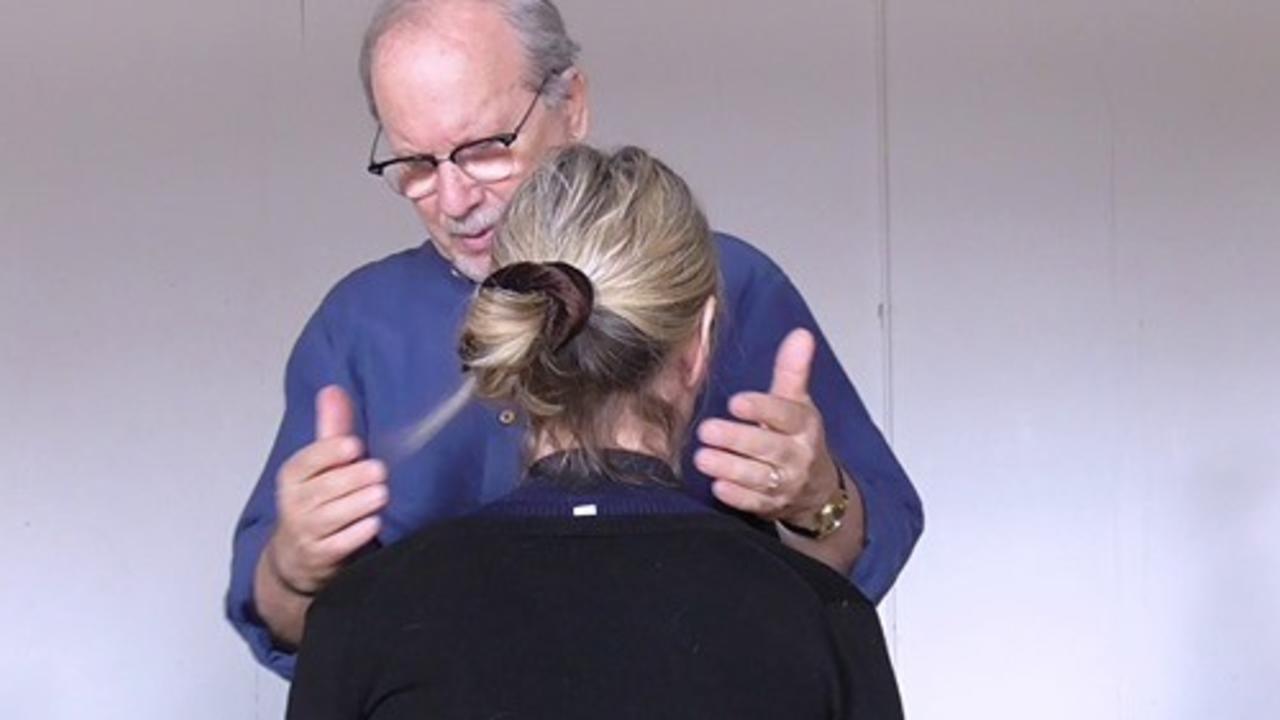Further Thoughts on 'The Teleceptors Organize the Head and Neck'

I recently posted a clip of a short, spontaneous FI demonstration filmed during an advanced training that I taught in England, in September 2019. It was graciously recorded by Feldenkrais Trainer, Raz Ori. In this particular clip, ‘The Teleceptors Organize the Head and Neck,’ the student sits on the table while I stand to work with her. For some of the lesson, her head rests against my chest. This is an extremely versatile and effective approach which allows the practitioner to move freely with a dynamic stability while at the same time being connected to another person in such a way that they feel themselves to be weightless. However, it presents some obvious challenges which I’d like to discuss.
First, I’d like to explain that the participants in this workshop were experienced Practitioners, with the exception of some fourth-year students from the London training program. They understood that we would not be focusing on individual FI skills, but instead on a more general approach of how to join with another person. I worked with students in a variety of positions, including seated, lying down, and standing up, demonstrating ways in which we can access the carriage and orientation of the head in direct and immediate ways.
In ‘The Teleceptors Organize the Head and Neck,’ I work with Jenny, who has been deaf in her right ear since birth. She has developed a compensatory orientation of her head, which brought her (left) hearing ear closer to her centerline. Leaning slightly forward with her head oriented to the right, she described the value of this orientation as allowing her to “have more of me.” In other words, it gave her greater access to whatever or whoever was in front of her.
As you can see in the video, I begin by working with Jenny’s head and neck and the vertebrae of her cervical spine. Then, I decide to move away from her neck and to work instead with her back, specifically her vertebrae and ribs. In order to access her back while maintaining contact with her neck, I rest her head against my chest. In this manner, I am able to keep her relatively stable, provide support to help reduce habitual muscular contraction, and move her around her base of support by moving myself. It is a tremendously effective position to work in, but rather intimate.
In order to make this approach more accessible and to begin teaching it to others, I have been exploring working with a flat pad or pillow between myself and my student. This reduces the quality of intimacy for both teacher and student and is just as effective. I have yet to devise the perfect ‘chest plate.’ It needs to be easy on and off, lightweight and covered with a washable cover for hygiene purposes.
However, even with a chest pad, I recommend that you use this approach with your FI students only after appropriate boundaries have been firmly established. In my practice, I always ask the student for their permission first, and I never work this way with a new FI student. I hope that this has helped to answer some of your questions, and I look forward to teaching this material in greater detail soon.
-David Zemach-Bersin
https://www.youtube.com/watch?v=GfwKunOuz7U


